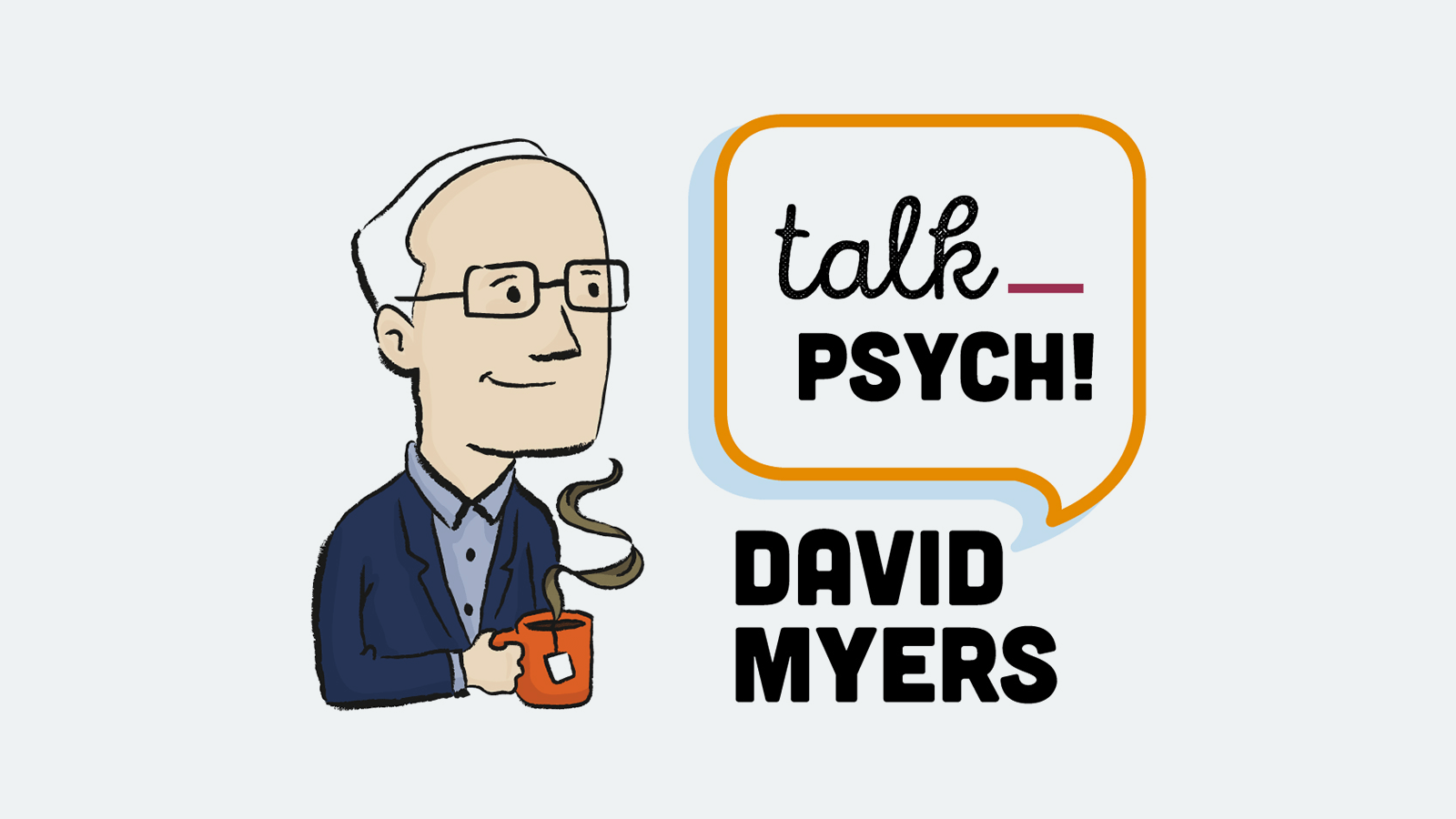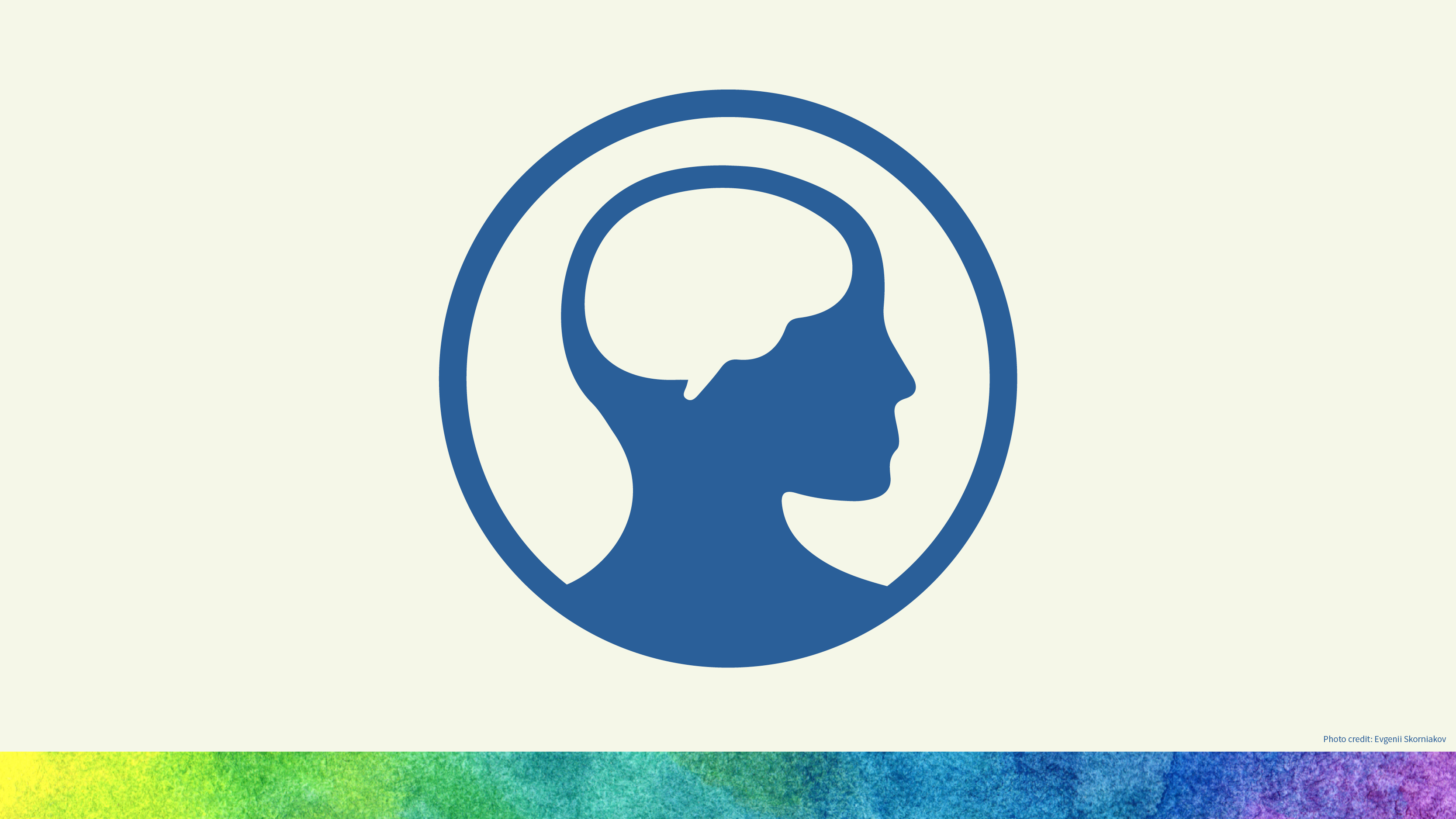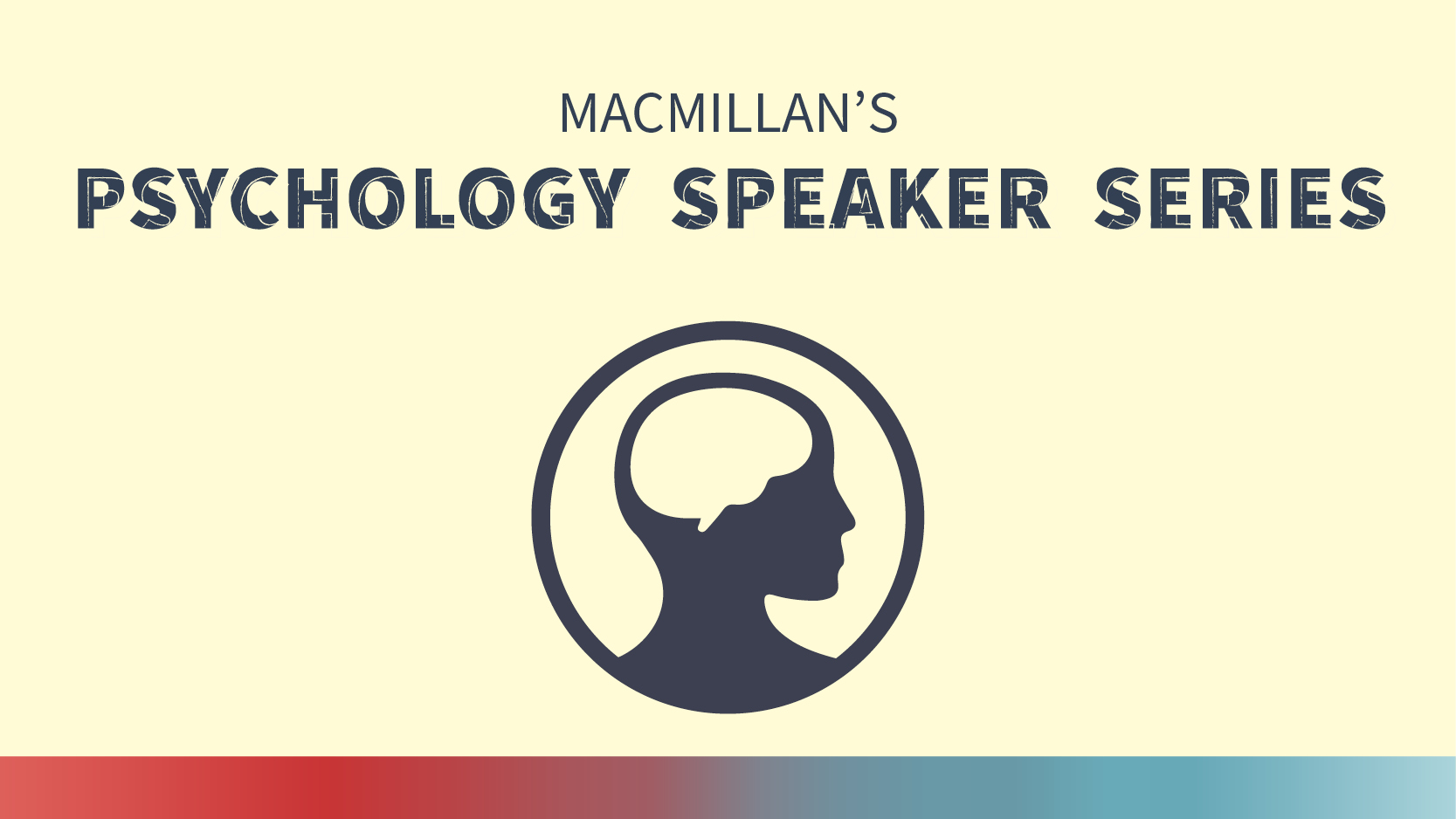-
About
Our Story
back- Our Mission
- Our Leadershio
- Accessibility
- Careers
- Diversity, Equity, Inclusion
- Learning Science
- Sustainability
Our Solutions
back
-
Community
Community
back- Newsroom
- Webinars on Demand
- Digital Community
- The Institute at Macmillan Learning
- English Community
- Psychology Community
- History Community
- Communication Community
- College Success Community
- Economics Community
- Institutional Solutions Community
- Nutrition Community
- Lab Solutions Community
- STEM Community
- Newsroom
- Macmillan Community
- :
- Psychology Community
- :
- Psychology Blog
Psychology Blog
Options
- Mark all as New
- Mark all as Read
- Float this item to the top
- Subscribe
- Bookmark
- Subscribe to RSS Feed
Psychology Blog
Showing articles with label Cognition.
Show all articles
Expert
03-19-2019
10:00 PM
When Seattle residents were surveyed concerning their fear of crime, many reported a fear that outpaced the actual level of crime. Two neighborhoods, for example, “are seemingly safe places to live, and rank among the 15 neighborhoods with the lowest rates of reported crime. But in terms of fear, they rank second and third, respectively — both at least 10 points higher than the city average.” There are 8 additional neighborhoods whose amount of crime is below the city average but whose fear of crime is above the city average (Balk, 2018). Additionally, while Seattle crime is frequently reported in the news, suburban crime is less reported. Some residents of Bellevue (population 150,000 and located 10 miles east of Seattle) have complained that problems with crime in their city has not enjoyed the same media coverage Seattle’s has. In all fairness, Bellevue’s crime rate is not near that of Seattle’s. For example, in 2018, while Seattle had 992 burglaries per 100,000 residents, Bellevue had 268 per 100,000 residents (Balk, 2019). Why do the residents of some Seattle neighbors greatly fear crime while their neighborhoods are pretty safe? Why do the residents of Bellevue think there is more crime in their city than there is? One culprit may be Nextdoor.com (Balk, 2019), “The private social network for your neighborhood.” The Nextdoor.com website says, “Nextdoor is the best way to stay informed about what’s going on in your neighborhood—whether it’s finding a last-minute babysitter, planning a local event, or sharing safety tips. There are so many ways our neighbors can help us, we just need an easier way to connect with them.” As a member of Nextdoor.com, I do see all of those things. But Nextdoor also provides a way for everyone to report suspicious activity and actual crime (posting security cam recordings of thieves stealing packages is a favorite), whether experienced themselves or by a neighbor. “Suspicious activity” is, of course, subjective. Whether it’s actual crime or “suspicious activity” that may have been nothing, it’s easy for readers of Nextdoor to add ticks to their mental crime column. For frequent Nextdoor readers, crime information is salient. The availability heuristic leads such readers to think their neighborhoods are crime-ridden when, in fact, the crime rates may be quite low. If only people would also report when they experienced no crime. (Do you think I could start that trend? “Dear neighbors, nobody harmed my family or stole my property today.”) It’s another nice reminder that the information we take in does indeed influence our perceptions. For those keeping score – System 1: 1; System 2: 0 (Stanovich & West, 2000). References Balk, G. (2018, June 28). ‘Mean world syndrome’: In some Seattle neighborhoods, fear of crime exceeds reality. Seattle Times. Retrieved from https://www.seattletimes.com/seattle-news/data/mean-world-syndrome-in-some-seattle-neighborhoods-fear-of-crime-exceeds-reality Balk, G. (2019, February 11). The ‘Nextdoor effect’ in Bellevue: A familiar reaction to crime. Seattle Times. Retrieved from https://www.seattletimes.com/seattle-news/data/the-nextdoor-effect-in-bellevue-a-familiar-reaction-to-crime Stanovich, K. E., & West, R. F. (2000). Individual differences in reasoning: Implications for the rationality debate? Behavioral and Brain Sciences, 23, 645–726. https://doi.org/10.1017/S0140525X00003435
... View more
Labels
-
Cognition
0
0
3,675
Expert
03-05-2019
10:00 PM
Cartoonists have pretty good insight into the workings of the human mind. How many of them took Intro Psych? These comics will jazz up your next research methods, cognition, personality, learning, and social psych lectures. Dilbert's boss does not have an operational definition of "employee engagement," and, thus, no way to measure it. Also, on the ethics side, no, it's not okay to make up data. Lio, having no trouble with functional fixedness, repurposes an object into a sled. Lio’s friends aren’t typical. His ingroups include monsters, aliens, and death himself. When everyone else sees those creatures as part of a threatening outgroup, to Lio, they are just his friends. Also, you don’t have to read through too many strips to see Lio’s strong internal locus of control. Rat in Pearls Before Swine can be counted on for a solid outgroup homogeneity bias. Jeremy’s mom in Zits provides a nice example of positive punishment. No, I don’t think he’ll forget his textbook at home again. Or, perhaps more likely, if he does forget it at home, he won’t ask his mom to bring it to school. After all, punishment makes us better at avoiding the punishment. Caulfield, the boy in Frazz, wonders if Santa has fallen victim to the just-world phenomenon. Pig in Pearls Before Swine, whose sweetness and innocence may be unparalleled in the comics universe, does not fall for the fundamental attribution error. Looking for more example from the comics? Here are some previous comic-focused blog posts: Spotlight effect Door-in-the-Face, classical conditioning, and operant conditioning Change blindness, priming, and positive reinforcement
... View more
Labels
0
0
6,366
Expert
01-08-2019
10:00 PM
Crows are smart. Never underestimate a crow. Comparative psychology is “the study of nonhuman animal behavior with the dual objective of understanding the behavior for its own sake and furthering the understanding of human behavior” (American Psychological Association, n.d.). The better that we understand how crows behave, think, communicate, and solve problems, the better we will understand both crows and ourselves. I have a short written assignment that my Intro Psych students do. After its completion, students have a greater appreciation for the crows around them. John Marzluff, a University of Washington zoologist, has made studying crows his life’s work. In his 22-minute TEDx talk, Marzluff shares what he thinks everyone should know about crows. I assign this during the thinking chapter in Intro Psych, after we’ve covered neuroscience and learning. It makes for a nice review of previously covered content. Here are the questions I ask my students to address: What three factors does Marzluff cite for the crow's problem-solving ability? Explain how each contributes to problem-solving skills. How do the brain areas of crows map onto the human brain? What do those brain areas do and why are they important? How do their brains differ from those of humans? Give an example from his talk of how the birds' behavior changed due to positive reinforcement. Give an example from his talk of how the birds' behavior changed due to observational learning. What is your reaction to this video? Video Link : 2348 Reference American Psychological Association. (n.d.). Comparative psychology. Retrieved December 26, 2018, from https://dictionary.apa.org/comparative-psychology
... View more
Labels
-
Cognition
-
Learning
-
Neuroscience
0
0
2,910
Expert
10-16-2017
12:09 PM
As if cell phone use in cars isn’t bad enough, car manufacturers are building distractions into our automobiles, which I affectionately call Built-in Automotive Driving Distraction Systems TM . Automakers now include more options to allow drivers to use social media, email and text. The technology is also becoming more complicated to use. Cars used to have a few buttons and knobs. Some vehicles now have as many as 50 buttons on the steering wheel and dashboard that are multi-functional. There are touch screens, voice commands, writing pads, heads-up displays on windshields and mirrors and 3-D computer-generated images (Lowy, 2017). In an attempt to save lives, I have been hammering pretty hard on our inability to multi-task in my Intro Psych course. While this topic comes up in greater detail when I cover consciousness, I also embed examples of attention research in my coverage of research methods. Correlation example After I introduce the concept of correlations, I give my students 5 correlations, and ask them to identify the correlation as positive, negative, or no correlation. One of those correlations comes from a 2009 Stanford study reported by NBC News: people who multitask the most are the worst at it (“memory, ability to switch from one task to another, and being able to focus on a task”) (“Multitaskers, pay attention -- if you can,” 2009). Experiment example In talking about experimental design, I discuss David Strayer’s driving simulation research at the University of Utah. His lab’s research is easy for students to understand and the results carry a punch. I give this description to my students and ask them to identify the independent variable and the dependent variables. In an experiment, "[p]articipants drove in a simulator while either talking or not talking on a hands-free cell phone." Those who were talking on a cell phone made more driving errors, such as swerving off the road or into the wrong lane, running a stoplight or stop sign, not stopping for a pedestrian in a crosswalk, than those who were not talking on a cell phone. Even more interestingly, those who were talking on a cellphone rated their driving in the simulator as safer as compared to those who weren't talking on a cellphone. In other words, those talking on the cellphone were less likely to be aware of the driving errors they were making (Sanbonmatsu, Strayer, Biondi, Behrends, & Moore, 2016). Class demo When Yana Weinstein of LearningScientists.org posted a link to a blog she wrote on a task switching demo (Weinstein, 2017) to the Society for the Teaching of Psychology Facebook page, I thought, “Now this is what my research methods lecture was missing!” I encourage you to read Weinstein’s original demo once you’re done reading mine. I randomly divided my class into two groups. To do that I used a random team generator for Excel, but use whatever system you’d like. Weinstein does this demo with a within subjects design which, frankly, makes more sense than my between subjects design, but in my defense I’m also using this demo to help students understand the value of random assignment. One group of students recited numbers and letters sequentially (1 to 10 and then A to J). The other group recited them interleaved (1 A 2 B 3 C, etc.). In your instructions, be clear that students cannot write down the numbers/letters and just read them. That’s a different task! Students worked in small groups. While one student recited, another student timed them with a cellphone stopwatch app. (You don’t have to know anything about cellphone stopwatch apps. Your students can handle it.) I didn’t bother dividing students into groups by task. In one group, there might have been three students who recited sequentially and a fourth student who recited interleaved. I asked students to write down their times, and then I came around to each group and asked for those times. I just wrote the times on a piece of paper, and displayed the results using a doc camera. Almost everyone in the sequential condition recited the numbers/letters in under 6 seconds. Almost everyone in the interleaved condition took over 13 seconds. In addition to talking about the independent variable (and experimental and control conditions) and the dependent variable, we talked about the value of random assignment. I had no idea who could do these tasks quickly or slowly. If 20% of them could do these tasks quickly, then random assignment would likely create two groups where the percentage of fast-task participants would be the same in each group. Is it possible that all of the fast-task participants ended up in the sequential task condition? Yep. And that’s one reason replication is important. Oh. And when you’re studying or writing a paper, students, this is why you should keep your phone on silent and out of sight. If you keep looking at your phone for social media or text notifications, it’s going to take you a lot longer to finish your studying or finish writing your paper. Perhaps even twice as long. And driving? As you switch back and forth from driving to phone (or from driving to Built-in Automotive Driving Distraction Systems TM ), it’s not going to take you twice as long to get to your destination. You’re traveling at the same speed, but you’re working with half the attention. That increases the chances that you will not get to your destination at all. A lot of what we cover in Intro Psych is important to the quality of students’ lives. Helping students see our inability to multitask is important in helping our students – and the people they are near them when they drive – stay alive. References Lowy, J. (2017, October 5). Technology crammed into cars worsens driver distraction. The Seattle Times. Seattle. Retrieved from https://www.seattletimes.com/nation-world/new-cars-increasingly-crammed-with-distracting-technology-2 Multitaskers, pay attention -- if you can. (2009). Retrieved from http://www.nbcnews.com/id/32541721/ns/health-mental_health Sanbonmatsu, D. M., Strayer, D. L., Biondi, F., Behrends, A. A., & Moore, S. M. (2016). Cell-phone use diminishes self-awareness of impaired driving. Psychonomic Bulletin & Review, 23(2), 617–623. https://doi.org/10.3758/s13423-015-0922-4 Weinstein, Y. (2017). The cost of task switching: A simple yet very powerful demonstration. Retrieved from http://www.learningscientists.org/blog/2017/7/28-1
... View more
Labels
-
Cognition
-
Consciousness
-
Research Methods and Statistics
0
0
6,580
Expert
11-19-2016
01:36 PM
Sure, you can explain what a prototype is, but what if students could experience generating a prototype and seeing how it compares with others? Maria Vita (Penn Manor High School, Millersville, PA) suggests using Google’s Artificial Intelligence (AI) experiment “Quick, Draw!” to do just that. After explaining prototypes, send students to the Google “Quick, Draw!” website on any web-enabled device, although a device with a touchscreen, such as a smartphone, is better. Students click the “Let’s Draw!” button to start. Students will be given 20 seconds to draw an object or a concept, such as boomerang. Google uses machine learning to try to guess what the object is. Once Google has correctly guessed or 20 seconds is up, whichever comes first, Google presents another concept or object to draw. After six trials, Google shows all six drawings along with the results. Tap on a drawing to see what other people have drawn for that concept or object as well as see drawings created for other objects that look like that one. Once students have had a chance to do a set of drawings, ask students to explain what this activity had to do with prototypes. (After being given an object or concept, whatever popped into their minds was likely their prototype for that concept.) Vita (2016) suggests instructors “[c]hallenge students to get 6 drawings guessed and/or when the program is unable to guess a drawing explain why it did not fit the prototype.” What’s in it for Google? This department within Google is exploring machine learning. Being given hundreds of drawings of, say, flamingos, helps Google identify any future drawings of flamingos as flamingos. References Vita, M. [AP Psychology Teachers]. (2016, November 18). Challenge students to get 6 drawings guessed and/or when the program is unable to guess a drawing explain why it did not fit the prototype. [Facebook group post]. Retrieved from https://www.facebook.com/groups/556665311050841/
... View more
Labels
-
Cognition
1
0
3,394
nathan_dewall
Migrated Account
07-20-2016
07:58 AM
Originally posted on June 2, 2014. We receive help every day. I don’t grow the food I eat, knit the clothes I wear, or assemble the TV I try to avoid. I don’t even cut my own hair. Nope, I rely on others to help me. But how do I get help when it involves asking? Amidst a recent report showing low levels of helpfulness among college professors (especially toward members of minority groups and women), I thought it would be good to help readers know how to increase helping. Here are the top 5 ways to do it (adapted from Latané and Darley, 1970). Notice help is needed. This goes both ways. I need to be aware that other people might need my help. I also need to make sure other people know I need help by asking. Realize when help is needed. If it’s an emergency, let people know it. Take personal responsibility for helping. Ignore what other people do. If you see someone in need, don’t wait for someone else to do the job. To quote Mahatma Ghandhi, “We need not wait to see what others do.” Make a decision to help. Think of this as the step between you wanting to help and you actually helping. Help! Now that you’ve made your decision, it’s time to put some feet on it. Take action and help.
... View more
Labels
-
Cognition
-
Nature-Nurture
0
0
6,603
Author
07-19-2016
10:27 AM
Originally posted on August 21, 2014. One of psychology’s big discoveries is our almost irresistible tendency to judge the likelihood of events by how mentally available they are—a mental shortcut that Daniel Kahneman and Amos Tversky identified as “the availability heuristic.” Thus anything that makes information pop into mind—its vividness, recency, or distinctiveness—can make it seem commonplace. (Kahneman explores the power of this concept at length in Thinking Fast and Slow, which stands with William James’ Principles of Psychology on my short list of greatest-ever psychology books.) My favorite example of the availability heuristic at work is people’s misplaced fear of flying. As I document in the upcoming Psychology, 11th Edition, from 2009 to 2011 Americans were—mile for mile—170 times more likely to die in a vehicle accident than on a scheduled flight. When flying, the most dangerous part of our journey is typically the drive to the airport. In a late 2001 essay, I calculated that if—because of 9/11—we in the ensuing year flew 20 percent less and instead drove half those unflown miles, about 800 more people would die. German psychologist Gerd Gigerenzer later checked my estimate against actual traffic fatalities (why didn’t I think to do that?) and found that traffic fatalities did, indeed, jump after 9/11. Thanks to those readily available, horrific mental images, terrorists had killed more people on American highways than died on those four ill-fated planes. The availability heuristic operates in more mundane ways as well. This morning I awoke early at an airport hotel, where I had been waylaid after a flight delay. The nice woman working the breakfast bar told me of how she, day after day, meets waylaid passengers experiencing weather problems, crew delays, and mechanical problems. Her conclusion (from her mentally available sample of flyers): something so often goes awry that if she needed to travel, she would never fly. Vivid examples make us gasp. Probabilities we hardly grasp.
... View more
Labels
-
Cognition
1
0
4,042
Expert
06-22-2016
03:06 AM
Theresa Wadkins (University of Nebraska – Kearney) has a quick, but powerful way to demonstrate schemas in action. On the day she covers schemas, Wadkins walks into class, approaches a student, and asks, “How are you? Are you having a good day?” After the student responds, sometimes in befuddlement, she returns to the front of the room and begins her lecture. A few minutes later, she returns to the student and asks, “How is everything?” Again, the student responds, even more perplexed. And then back to the lecture. For the third and final time, she returns to the same student and asks, “Can I get you anything?” Wadkins then explains to her students that we have different schemas for what happens in a classroom and what happens in a restaurant. While being asked such questions is peculiar for a classroom, we would be put off if we weren’t asked these very same questions by a server in a restaurant. If you’d like to expand on this activity, ask students – in small groups or through an online discussion board – to identify the schema characteristics of what happens when a customer visits a sit-down restaurant and the schema characteristics of what happens when a customer visits a fast-food restaurant. Invite students to share the characteristics of each that they generated. Summarize the responses into a coherent schema for each type of restaurant. Ask students to reflect – in small groups, through an online discussion board, or as a written assignment – on what would happen if they had no schema for a sit-down restaurant when they walked into one. Or if they had no schema for a fast-food restaurant when they walked into one. Or if they walked into one type of restaurant with the schema for the other type of restaurant in mind. For added discussion or writing assignment, invite students to identify times when a schema they had did not match the situation.
... View more
Labels
0
0
8,668
Expert
01-13-2016
04:00 AM
As a psychology instructor it is clear to you the myriad ways in which psychology can be used to both understand social issues and speak to solutions. In fact, the APA Guidelines for the Major (2013; see below) encourages us to help our students see the same. Debra Mashek (2016) suggests a few assignments that provide our students opportunities to connect psychology with today’s social issues. Integrative essay The instructor chooses three articles (interesting, nifty methodology, and not too difficult for students to understand – but on the surface may not have anything obviously to do with each other), and assigns one of those articles to each student, i.e. 1/3 of the class gets article A, 1/3 gets article B, and 1/3 gets article C. Each student writes a one-page summary of their assigned article and brings that with them to class. The class breaks up into groups of three, where the groups are composed of students who have all read different articles. In a jigsaw classroom format, the students tell the others in their three-person group about their article. Students then “articulate an applied question that invites application of ideas from all the articles.” Each 3-person group then co-authors a short paper (two to three pages) that identifies their applied question and how each of the three articles speak to that question. Persuasion research activity Right after Hurricane Katrina, Mashek decided she wanted her Intro Psych students to experience psychological research firsthand while also contributing to the relief effort. Mashek gave a brief lecture on foot-in-the-door, door-in-the-face, and reciprocity. She randomly assigned ¼ of students to foot-in-the-door, ¼ to door-in-the-face, ¼ reciprocity (she gave these students lollipops to hand to people before asking for a donation), and ¼ to a command condition (“give money”). During that same class period students were sent out in pairs to different areas of campus to return an hour later. Thirty-five students collected $600. Students reported a greater connection to the victims of Katrina after they returned than they reported before they left. Mashek used this experience as a leaping off point for discussing research methodology in the next class session. Current headline classroom discussion Pick a current headline. Break students into small groups, perhaps as an end of class activity, and give them one or two discussion questions based on the current chapter you are covering that are relevant to the headline. For example, if you are covering the social psychology chapter in Intro Psych, give students this headline from the January 9, 2016 New York Times: “Gov. Paul LePage of Maine Says Racial Comment Was a ‘Slip-Up’.” This is a short article, so you could ask students to read the article itself. Sample discussion questions: (1) What evidence is there of ingroup bias? (2) Do Gov. LePage’s comments illustrate stereotyping, prejudice, and/or discrimination? Explain. If time allows, student groups can report out in class. Alternatively, this could be a group writing assignment or a scribe for the group could post a summary of the group’s responses to a class discussion board. Students will gain an appreciation of the scope of psychology and how it is relevant to today’s social issues. This activity throughout the course should help students, after the course, to continue to see psychology at play. The APA Guidelines for the Major (2013) include these indicators related to social issues: 1.3A Articulate how psychological principles can be used to explain social issues, address pressing societal needs, and inform public policy 3.3c Explain how psychology can promote civic, social, and global outcomes that benefit others 3.3C Pursue personal opportunities to promote civic, social, and global outcomes that benefit the community. 3.3d Describe psychology-related issues of global concern (e.g., poverty, health, migration, human rights, rights of children, international conflict, sustainability) 3.3D Consider the potential effects of psychology-based interventions on issues of global concern American Psychological Association. (2013). APA guidelines for the undergraduate psychology major: Version 2.0. Retrieved from http://www.apa.org/ed/precollege/undergrad/index.aspx Mashek, D. (2016, January 4). Bringing the psychology of social issues to life. Lecture presented at National Institute on the Teaching of Psychology in Tradewinds Island Grand Resort, St. Petersburg Beach. Seelye, K. Q. (2016, January 9). Gov. Paul LePage of Maine Says Racial Comment Was a 'Slip-up'. The New York Times. Retrieved January 9, 2016, from http://www.nytimes.com/politics/first-draft/2016/01/08/gov-paul-lepage-of-maine-denies-making-racist-remarks
... View more
Labels
-
Abnormal Psychology
-
Cognition
-
Consciousness
-
Developmental Psychology
-
Emotion
-
Evolution
-
Gender
-
Genetics
-
History and Systems of Psychology
-
Industrial and Organizational Psychology
-
Intelligence
-
Learning
-
Memory
-
Motivation
-
Nature-Nurture
-
Neuroscience
-
Personality
-
Research Methods and Statistics
-
Sensation and Perception
-
Social Psychology
-
Stress and Health
0
0
8,654
Topics
-
Abnormal Psychology
5 -
Achievement
2 -
Affiliation
1 -
Cognition
9 -
Consciousness
13 -
Current Events
6 -
Development Psychology
9 -
Developmental Psychology
12 -
Drugs
4 -
Emotion
19 -
Evolution
1 -
Gender
4 -
Gender and Sexuality
3 -
Genetics
2 -
History and System of Psychology
4 -
History and Systems of Psychology
2 -
Industrial and Organizational Psychology
15 -
Intelligence
1 -
Learning
26 -
Memory
10 -
Motivation
4 -
Motivation: Hunger
1 -
Nature-Nurture
2 -
Neuroscience
15 -
Personality
11 -
Psychological Disorders and Their Treatment
9 -
Research Methods and Statistics
41 -
Sensation and Perception
15 -
Social Psychology
45 -
Stress and Health
5 -
Teaching and Learning Best Practices
30 -
Thinking and Language
9 -
Virtual Learning
7
- « Previous
- Next »
Popular Posts








